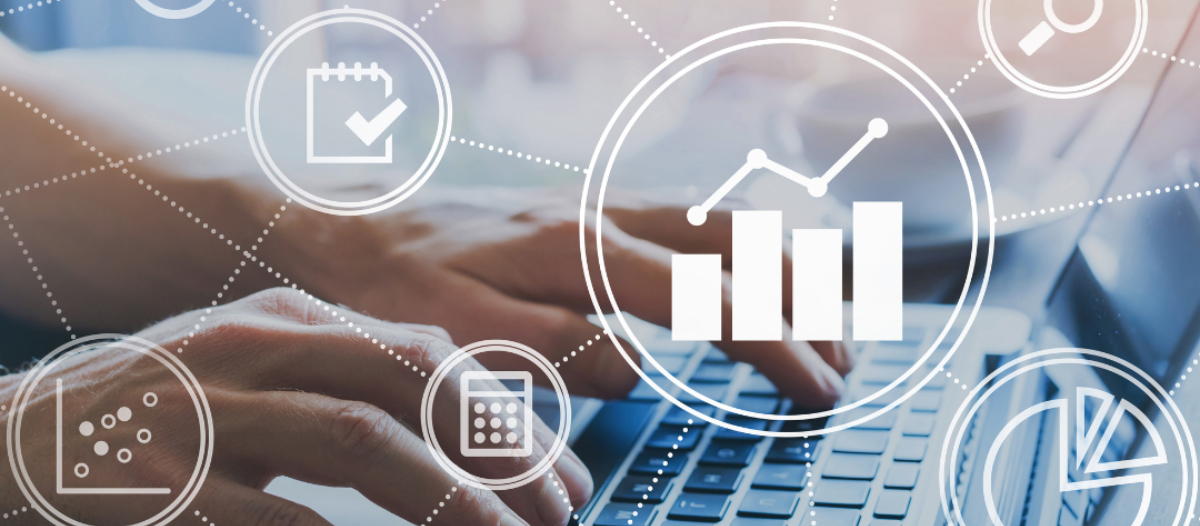Imagine
The smart, sustainable building of the future

Envision a built environment that meets all governmental, societal and other stakeholder demands, and evolves along with these requirements. What would be required to achieve a truly smart building state? And what exactly is meant by “smart?”
The concept of a smart building has existed for decades but traditionally has been thought of purely in terms of connectivity. Historically, a building has been termed smart if it utilizes sensors to collect data from the built environment.
However, the pace of digital transformation has rapidly increased expectations around what it takes for a building to truly be considered smart, and it now goes well beyond simple data collection. The concept of a smart building has been in constant motion, driven by advancements in data availability, automation and predictive technologies. These advancements will continue to have ramifications both inside and outside the office; so much so, that the smart building of the future is unlikely to be a typical commercial space bolstered by a shiny, new digital solution. It will be much more.
A broadening scope
The smart building landscape has drastically changed. Worldwide, the number of smart buildings is projected to reach 115 million by 2026. However, it is not just in terms of scale that smart buildings are changing; it is also what makes up the building inside. For instance, JPMorgan Chase is experimenting with a number of concepts to improve office spaces in smart buildings, including biophilic walls, aromatherapy, circadian lighting, re-energizing furniture and hologram conferencing.
The scope of smart buildings continues to expand to encompass the broader environment around buildings, extending the context of digital solutions beyond their existing remit. This change is driven by several factors, including the growing focus on outside building facilities like public transport, leisure, health and even shopping for employees.
Meanwhile, new types of connections between buildings, such as microgrids, will enable real estate managers to gain new benefits from the synergies set in motion from enhanced sustainability and improved cost efficiencies. Smart technologies can make buildings active components of the grid themselves, for example, anticipating energy needs, consuming power locally at the most appropriate time and feeding it back when required. Regulations are also likely to have an impact, defining what is meant by sustainable and providing guidelines around any smart building project.
Incorporate smart buildings in the business domain
Emphasizing that the future concept of the smart building will depend on more than just what occurs within the confines of the office, it is predicted that buildings will be integrated with one another as well as additional facilities within the urban environment. This concept of smart cities – where traditional networks and services are made more efficient using digital solutions for the benefit of individuals and businesses – will depend on the proliferation of smart buildings.
With a predicted market value of US$1.4 trillion by 2030, this vision of smart cities includes a variety of smart workplaces. The smart building of the future could be multi-use to improve efficiency, meet sustainability goals and optimize resources. Managing buildings and building portfolios in this environment will require a variety of seamlessly integrated digital tools.
However, to incorporate truly smart buildings within a business domain, organizations will need to embrace the merging of existing fragmented market concepts, such as CMMS, IWMS, EMS, CREM, BIM and IoT, into a single new overarching market perspective. Open platforms that can offer close integration with enterprise applications, vendor systems and service contractors, as well as building management systems, IoT platforms and sensors, will be critical to ensuring that the smart building of the future does not become mired in a fragmented mass of disparate solutions.
Adoption of more open platforms and ecosystems will be driven by innovation and the growing ease of technology integration, as well as a need for better alignment between all building stakeholders to realize and operate sustainable, resilient fit-for-purpose buildings. An ongoing wave of acquisitions in the building technology sector will also extend vendors’ value propositions across the building life cycle. Change is coming to the built environment. It is essential that organizations are ready for it.
Innovating for impact
Amid all the excitement around digital transformation projects and the potential benefits the smart building of the future could unlock, organizations should not become overly fixated on the bricks and mortar that make up their physical building assets. Over the last few years, it has become clear that the building itself is only one part of the overall story. Smart buildings of the future will connect and be connected to the people who use them and surround them, as well as the surrounding environment.
To deliver the greatest impact, tomorrow’s smart building must consider the needs of all relevant stakeholders. Market demands will necessitate that this impact is verifiable, ensuring that tangible, proven output can be delivered. A focus on just the capabilities of a smart building will no longer be enough.
Solutions employed by smart buildings will increasingly leverage data to prove this impact and meet rising stakeholder demands. Customers now expect solutions that immediately and positively impact environmental, social and governance (ESG) goals, lives and livelihoods. Impact includes the ability to deliver, execute and measure results immediately. Innovations, such as artificial intelligence (AI) and machine learning (ML) will result in the term “smart,” whether it is applied to buildings, operations or businesses, evolving into “intelligent.”
According to a recent IBM study, the implementation of cutting-edge technologies like AI within smart buildings could optimize performance substantially. As many as 76 percent of COOs believe increased automation in facility and asset management will improve operational efficiency. AI will break down silos, integrating data from a vast array of IoT sensors within a building, delivering insights that impact the physical environment, utility consumption, occupant experience and satisfaction levels.
Even so, the journey toward the intelligent building of the future is unlikely to be without some bumps along the way. Data quality will represent a significant challenge for many. Integrating data from different sources may not be seamless for some organizations, especially where different vendors use bespoke, rather than standardized, data formats.
Improving building data quality and facilitating the integration of different sources of data, including business, facility, environmental and operational data, is necessary to enable AI and smart applications to flourish. Integrating ERP and PropTech solutions is essential to ensure that buildings, people and processes are connected in a holistic way.
Cybersecurity represents another hurdle. Unfortunately, there is a low level of preparedness and awareness of cybersecurity issues in the real estate and facility management industries. As evidence, a recent KPMG study found that almost 80 percent of organizations in the property sector did not have a company-wide strategy for protecting building technology against cyberattacks. The more the real estate sector embraces technology and data-driven insights in pursuit of the intelligent building of the future, the greater the potential cybersecurity risk. These are the kinds of initial challenges that must be overcome before further digitalization efforts can be implemented.
The future of the built environment
Predicting the future may be an impossible task, but there are existing trends that provide some indication of what tomorrow’s smart buildings may look like. Technology, as represented by the host of different solutions available to real estate and facility management personnel like CMMS, IWMS, BIM, IoT and AI solutions, will undoubtedly develop further. To avoid fragmentation, however, it is likely that some of these tools will merge to form a single, new overarching platform.
The beginnings of this can already be seen in some of the digital solutions available to building owners and operators. The best examples of these allow for the seamless integration of ERP platforms and smart building systems. This will deliver value across the entire enterprise in a way that would not have been possible using disparate fragmented tools.
The benefits of taking an integrated approach to operations technology, smart building management software and ERP are many. This will provide the framework to implement data-driven strategic portfolio decisions, reduce building operating costs, enhance the value of assets throughout their life cycle, increase building sustainability and improve workplace experiences for occupants. With the focus of sustainability only increasing in importance for intelligent buildings in the future, a broadening spectrum of stakeholders is set to make heightened demands on building portfolios regarding things like emission levels and resource usage. As such, the intelligent building of the future will be smart and sustainable.
To fully understand the future of the workplace, one also needs to have an idea about the future of work. There are several concepts set to have an impact, including a greater understanding of neurodiversity, the global emergence of a four-day work week, and the expansion of integration between the physical and the virtual. How will people work in the future? Whatever new work concepts arise, the workplace, or lack thereof, will always be a crucial part. However, changing patterns and preferences of work will undoubtedly affect the demand for and purpose of office space, as well as the user experience. This must be factored into any conversation about the intelligent buildings of the future.
New heights in the smart building journey
There are many unknowns around the smart building journey. What will the office of tomorrow look like? What will stakeholders demand of their workplaces in terms of flexibility, functionality, sustainability and facilities? Although these remain open-ended questions, the smart building domain already contains much to get excited about. Already, IoT sensors and digital twin technologies have had a huge impact on building performance. AI could take this to new heights. As a case in point, McKinsey & Company has already seen real estate firms gain 10 percent or more in net operating income by leveraging the technology. Imagine if these kinds of smart building benefits were spread across an entire building portfolio, industry or economy.
Many buildings continue to be underutilized. They are more than just physical spaces. They are hubs around which people are brought together – the 2020 pandemic made that abundantly clear. They are places where ideas are generated, relationships are forged and entire lives are shaped. They offer untold opportunities for work, engagement and sustainability. In the future, intelligent buildings will leverage a plethora of technologies, including PropTech, to bring these opportunities to life, all seamlessly integrated with one another. However, as always, it will be the building occupants who use and benefit from these technology solutions on a day-to-day basis that will be the most fundamental part of shaping the intelligent buildings of the future.


Read more on Technology , Sustainability and Emerging Topics
Explore All FMJ Topics









